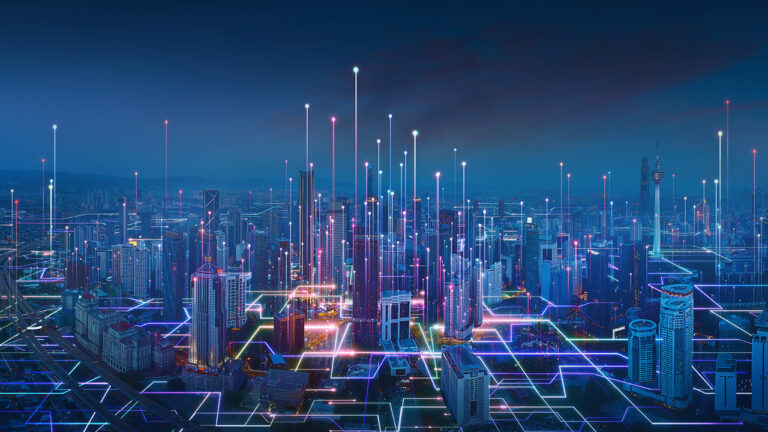Keeping Our World Connected with Broadband

Before the internet became an essential part of our modern world, its earliest users were scientists, computer experts, librarians, and engineers. As anyone who began their computer usage learning DOS will attest to, it was complicated. In 1969, the first internet was created connecting four major computers at The University of Utah, UCSB, UCLA, and Stanford Research Institute and was known as ARPANET. Once this network of computers successfully transmitted information both internally and externally-they began connecting to other universities including MIT, Harvard, and Carnegie Mellon. Eventually, ARPANET was renamed “internet.”
Essentially, the internet is a communications delivery system and by the mid-1980s, the entire nation was hooked in. Once the internet went commercial, the information highway was born with milestones that included the invention of Wi-Fi, windows 98 (which introduced internet connection sharing), widespread smartphone adoption and 4G which improved mobile network internet speeds enabling wireless users to stream hi-definition audio and video. While 4G networks were mostly designed for phones, 5G is a bigger jump forward and designed for much more flexible use, replacing the need for many special-purpose networks.
You can’t talk about the internet without talking about broadband
Broadband is the transmission of wide bandwidth data over an internet connection through fiber optics which is a conduit that carries data. Bandwidth equates to the volume of information you receive every second—rather than how fast it’s received. In the mid-1990s, commercial internet access opened and was sold to consumers (us) as a phone dial-up service that used existing land lines. This meant the phone and internet couldn’t be used at the same time. In the early 2000s, broadband began to replace dial-up, enabling users to access the phone separately since broadband offered a continuous internet connection.
Although broadband dial-up wasn’t speedy, half of these users would have that connection by 2007. Faster speeds were attained when broadband jumped over to utilizing the copper cable television wires. While fiber optic cables were used to the street level—the copper cables fed from street to home/office still didn’t maximize speed. Today, full fiber optic broadband cable handles the most amount of data and provides faster speeds for the high-capacity activities we do like video conferencing, gaming, or streaming HD videos etc. Broadband provides high-speed internet access via multiple types of technologies including fiber optics, wireless, cable, DSL and satellite. While each of these has its limitations, fiber optic cables provide faster data transmission than wireless networks and the connection remains strong during peak usage.
Why does all this matter?
Even in today’s world, many areas within our country have low-speed connectivity—or none. In many rural areas, including Tribal Nations, there is a push to provide Internet for All. In November 2021, President Biden signed the Infrastructure Investment and Jobs Act into law and provided $billions for broadband access. According to the National Conference of State Legislatures (NCSL.org), “The initiative will invest $45 billion to provide affordable, reliable, high-speed internet for all Americans by the end of the decade and will be administered and implemented by the U.S. Department of Commerce’s National Telecommunications and Information Administration via three programs and their corresponding Notices of Funding Opportunity: Broadband Equity, Access, and Deployment Program ($42.5 billion); Enabling Middle Mile Broadband Infrastructure Program ($1 billion); and State Digital Equity Act programs ($1.5 billion).
According to the Harvard Business Review, “Right now, close to half of the U.S. population is not using the internet at broadband speeds, either because broadband internet infrastructure does not reach them, they can’t afford the service, or they don’t have the skills or knowledge to use it.”
What we do
Broadband is the backbone of internet architecture. While our Telecommunications group is vested in working on helping carriers with tower construction, structural modifications for growing and upgrading networks, our broadband division works on designing the fiber connectivity from a central office to the carrier tower (FTTT). An unlimited amount of data can be transferred depending on the extent of electronics built into the central office. At this stage, fiber optic cables can be implemented via aerial design (on poles) or underground using the trench or bore method.
This middle-mile feeds broadband to the customer, which can be enterprise (business) clients or our homes (FTTH), as consumers, or other entities (FTTX), and is called OSP, or Outside Plant design. Optical Fiber, known as the backhaul, provides connectivity of internet service providers tying cities and states together. It also ties back into the main Google hub and is configured to connect to the cell antennas which feed cellphones.
ISP, or Inside Plant installation, is the phase when the fiber network reaches its final destination—the electronic panel or cabinet in the building. For larger, more commercial clients, this cabinet typically houses racks that include the facility’s network connection, transmission electronics, DC power, generator and back-up batteries. For the home, you pretty much just turn on your computers, TVs, and myriad other electronic devices, to bring the IoT (Internet of Things) to life while we enjoy the fastest speeds available.
Conclusion
Our fiber team collaborates with clients to develop turnkey broadband design solutions for all segments of their projects to meet the ever-growing demand for network capacity. This includes accurate permitting and some grant potential in certain areas, leading to rapid deployment of fiber installations. Being a multi-disciplinary engineering firm with a national presence enables us to deliver an efficient experience for our customers

Comments are closed.